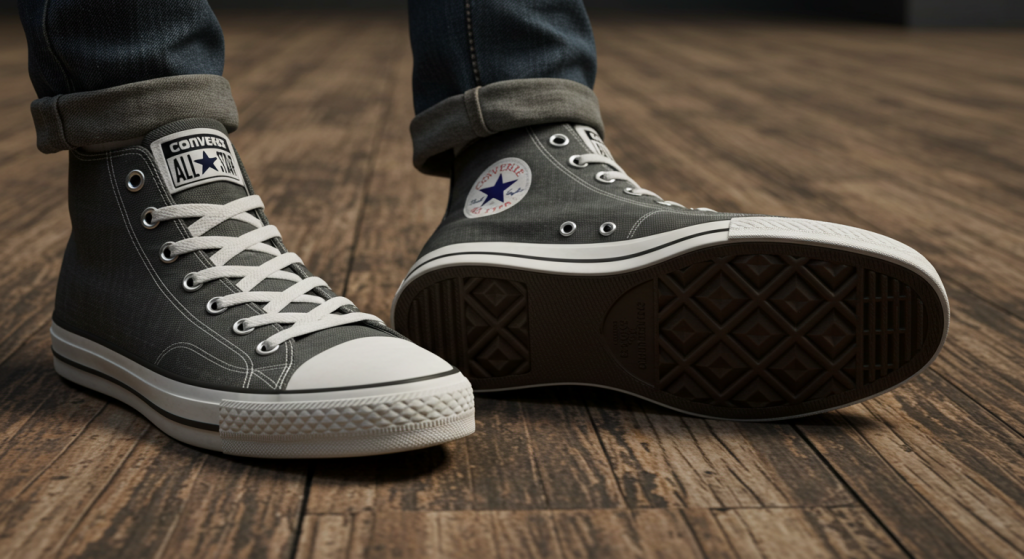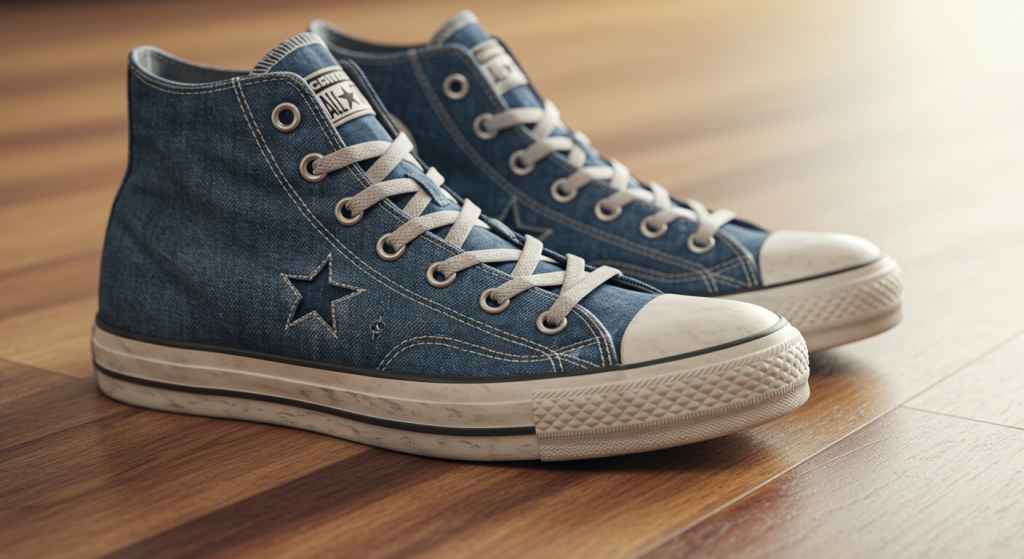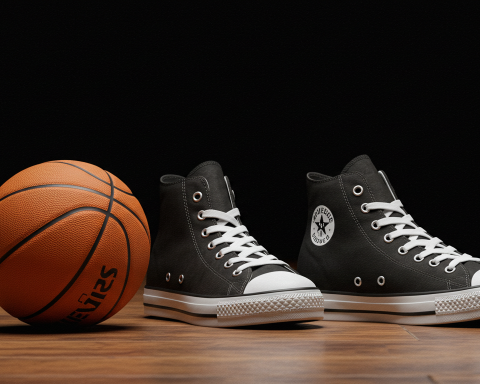From basketball courts to punk rock stages, from hip-hop corner blocks to haute couture runways… the Chuck Taylor All Star isn’t just a shoe; it’s a blank canvas on which generations have painted their identities. It’s a design paradox: both utterly ubiquitous and endlessly reinterpretable. How did this unassuming canvas-and-rubber sneaker, born from humble beginnings, achieve such a staggering lifespan? This is the story of its surprising origin, its rugged construction, its remarkable adoption by subcultures, and the cultural resonance that fuels its persistent appeal.
From the Court to the Culture: An Unlikely Icon’s Genesis
The Chuck Taylor All Star began not as a fashion statement, but as a performance tool. In 1917, the Converse Rubber Shoe Company introduced the “All Star,” a high-top canvas sneaker designed for basketball players. It was functional, durable, and offered decent ankle support for the nascent sport. However, its trajectory took an interesting turn in 1923, when a basketball player named Charles “Chuck” Taylor, impressed by the shoe’s performance, joined Converse’s sales force.

Taylor wasn’t just a salesman; he was an evangelist. He traveled across America, conducting basketball clinics, promoting the All Star, and suggesting design improvements. Converse listened. In 1932, they added Taylor’s signature to the ankle patch, and the “Chuck Taylor All Star” was born. This wasn’t mere marketing; it was an authentic partnership. Taylor’s endorsement solidified the shoe’s credibility within the basketball community, and its reputation for durability and comfort spread. For decades, it was the basketball shoe, worn by professionals and amateurs alike.
Construction and Deconstruction: The Simplicity of Enduring Appeal
The Chuck Taylor’s design is deceptively simple: a canvas upper, a rubber sole, and that iconic circular ankle patch. Yet, this very simplicity is key to its enduring appeal. The canvas, initially available in basic black, provides breathability and allows the shoe to mold to the wearer’s foot over time. The vulcanized rubber sole offers decent grip and flexibility. While not technologically advanced by today’s standards, this robust construction proved remarkably resilient, suitable for both athletic pursuits and everyday wear.

However, the Chuck Taylor’s enduring appeal lies not just in its practicality, but also in its ability to be deconstructed and reconstructed by its wearers. The blank canvas invites customization: paint, patches, rips, scribbles. It welcomes transformation. This malleability makes it a mirror, reflecting the individuality of each person who laces it up.
Beyond the Baseline: Subcultures and the Chuck Taylor
The Chuck Taylor’s shift from sports equipment to cultural touchstone is a fascinating study in unexpected adoption. As basketball shoe technology advanced, the All Star faded from professional courts. However, it found new life outside the realm of athletics, embraced by a diverse range of subcultures who appreciated its affordability, its rebellious spirit, and its ability to become a symbol of belonging.
- The Rock ‘n’ Roll Rebellion: From the 1950s onward, Chuck Taylors became synonymous with rock ‘n’ roll cool. Worn by everyone from James Dean (onscreen) to the Ramones, they represented a rejection of conformity and a celebration of youthful energy. Black Chucks, in particular, became a visual shorthand for counter-cultural attitude.
- The Punk Rock Anarchy: In the 1970s, the punk rock movement adopted the Chuck Taylor as part of its anti-fashion ethos. Ripped jeans, leather jackets, and well-worn Chucks became the uniform of rebellion. The shoes’ affordability and durability made them ideal for the mosh pit.
- The Hip-Hop Harmony: The 1980s saw the Chuck Taylor embrace hip-hop culture. Artists like Run-DMC and the Beastie Boys sported them, cementing their status as a streetwear staple. The shoes’ versatility allowed them to be styled with everything from tracksuits to oversized denim.
- The Grunge Grit: The 1990s grunge scene further solidified the Chuck Taylor’s association with alternative culture. Well-worn, often deliberately distressed Chucks became the footwear of choice for bands like Nirvana and Pearl Jam, mirroring the genre’s raw, anti-establishment aesthetic.
- The Haute Couture High Note: In a surprising twist, the Chuck Taylor has even found its way onto high-fashion runways. Designers like Comme des Garçons have collaborated with Converse, creating elevated versions of the classic silhouette while retaining its core identity. This demonstrates its ability to transcend its utilitarian origins and be reinterpreted for even the most exclusive contexts.
Reinterpretation and Reinvention: A Century of Style
The Chuck Taylor’s remarkable longevity is due, in large part, to its ability to be endlessly reinterpreted. Each generation finds new ways to wear it, to style it, to imbue it with new meaning. Converse has also played a role in this reinvention, releasing countless variations in colors, materials (leather, suede, denim), and heights (low-tops, high-tops, platform versions). Collaborations with artists, designers, and brands keep the shoe feeling fresh and relevant.
Yet, through all these transformations, the core essence of the Chuck Taylor remains: a simple, durable, and affordable shoe that invites self-expression. It’s a blank canvas for personality, a symbol of belonging to a tribe, a comfortable and reliable companion on the journey of life.
More Than Just a Shoe: A Cultural Artifact
The Converse Chuck Taylor All Star is more than just footwear; it’s a cultural artifact. It’s a mirror reflecting a century of social change, musical movements, and evolving style sensibilities. It embodies rebellion, individuality, and a rejection of the status quo. It’s a design paradox: simultaneously ubiquitous and deeply personal. It proves that simplicity, durability, and a bit of serendipity can create a lasting legacy. From its humble beginnings as a basketball shoe to its status as a global icon, the Chuck Taylor has defied expectations and walked its own path, firmly establishing itself as a true original. Perhaps a shoe can’t change the world, but the Chuck Taylor All Star has certainly left its indelible footprint on it.




